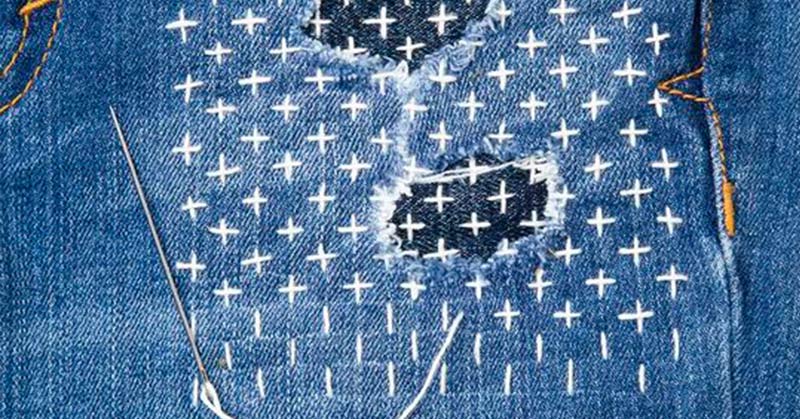Sashiko is Japanese for “little stabs”. It’s an amazing style of embroidery where you create a threaded pattern on fabric using visible running stitches. While sashiko can be used to design good pieces of clothing and add lovely patterns, it’s mostly used for mending. Instead of discarding that torn piece of clothing or covering it with some else, you could visibly mend it and give it an even better look, highlighting rips, tears, fray, fringes and jabbed edges.
The commonest motifs are usually floral, abstract, or environmental, representing oceans, trees, birds.
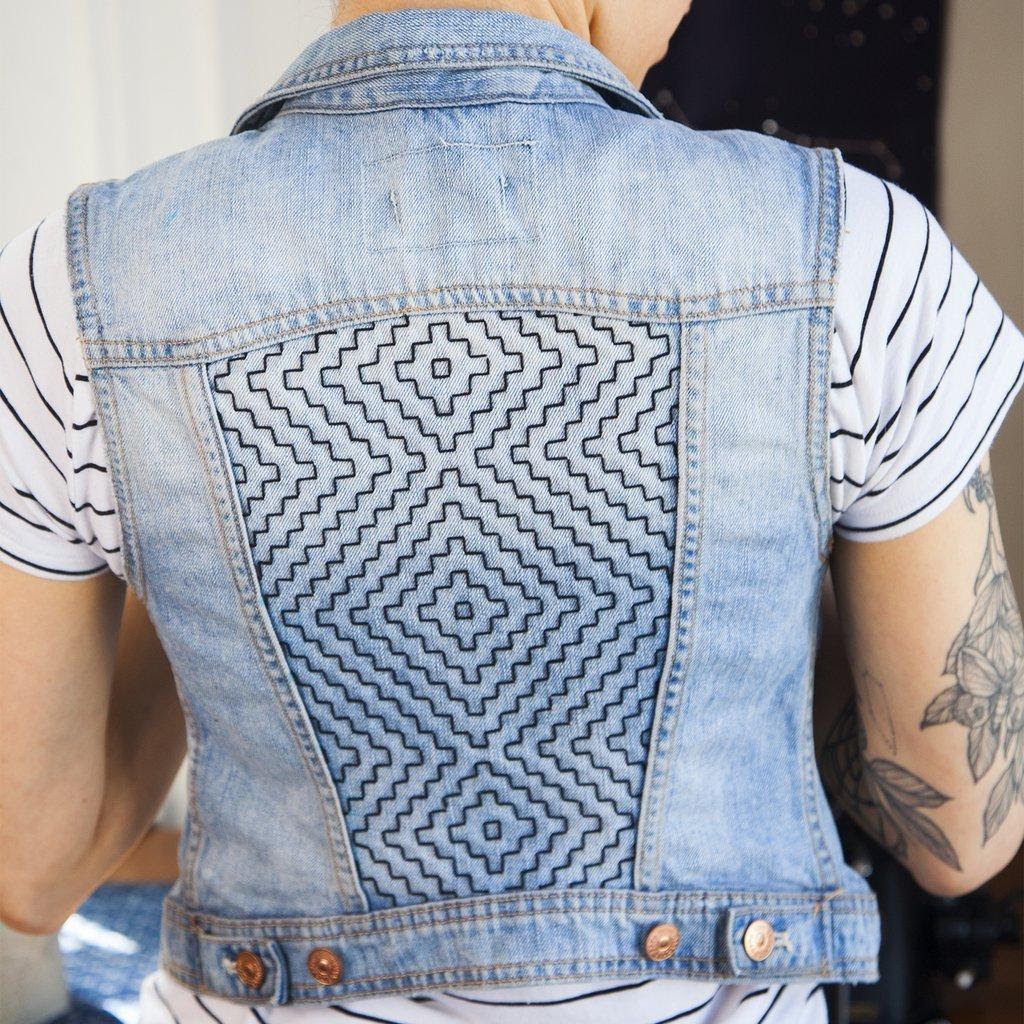
Sashiko doesn’t only reinforce a piece of clothing, but it makes it stronger, warmer, and a lot more fashionable. This art looks especially amazing on denim, cotton and wool materials. Lots of quilt manufacturers have machinery that stitches sashiko patterns on blankets. Visible mending increases the sustainability of clothes. If you develop sashiko as a handy skill, you’d be less tempted to throw away your ripped clothes and upcycle them to cooler items. There are thousands of beautiful patterns you could work with.
Speaking to Vox, Jessica Marquez, a fashion designer, and style teacher explains that sashiko is not merely a style of embroidery, but a beautiful form of self-expression [1].
“I talk a lot about Sashiko as a Japanese technique, and I talk about how it was developed,” she explains. “It’s a resourceful technique; it’s birthed out of necessity and thrift, and we have everything. I think people are becoming really more conscious of where their clothing is coming from and learning more about the stream, like the real lives that are making their garments, and kind of pushing against fast fashion and making their visible mends kind of a statement against this consumerism that’s shoved down our throats.”
What you need and how it’s done
Sashiko can be done by hand or with a sewing machine. If you’re going to use a machine, you’d have to use a manual one to control the speed. More precision is required here because you’ll need to constantly twist the fabric to get the pattern you want. Set the needle spacing to a large distance so the stitches would be more visible.
However, if you’re going to be hand-stitching, you’d need the items below.
Sashiko needle: This needle is long enough to allow you to load several stitches before you start sewing. It’s narrowly-tipped and comes in various sizes and lengths. For wide-spaced stitches, the longer needles are best used to increase work speed.
Sashiko thread: For whatever color you choose, the sashiko thread is a strong fabric material made out of heavy 100% cotton and is non-divisible. The most common replacements for sashiko thread are stranded cotton embroidery floss, pearl cotton, or fine crochet cotton.
Sashiko thimble: While doing any kind of hand sewing, a thimble is an important protective accessory to safeguard your palm or finger from the needle’s tip. A sashiko thimble is different from the regular kinds of thimbles. It’s worn as a ring at the base of the middle finger of your sewing hand with a metal shield to protect your flesh. It mostly comes in metal and leather variants.
Other tools you‘d need include the regular sewing stuff, such as scissors drawing pad and pencil, tailor’s chalk (very important), and straight pins.
What to do:
Sashiko is done with the running stitch, which is basically the easiest form of stitching. All you have to do is poke your needle down into the fabric and poke it back it up. To save time, it’s best to load several stitches onto the needle before pulling the thread through the material.
A recommended practice is to draw your pattern on paper and transfer it to the material using your tailor’s chalk. This allows you to avoid mistakes that would either make the design look tacky or waste a lot of your time.
Ensure the stitches are tight and follow your pattern to the tiniest curve. The possibilities are endless and it’s always a relaxing task to create sashiko patterns. In my opinion, it’s way better than knitting – and a lot easier.
A few exciting patterns you could try from The Spruce Crafts:

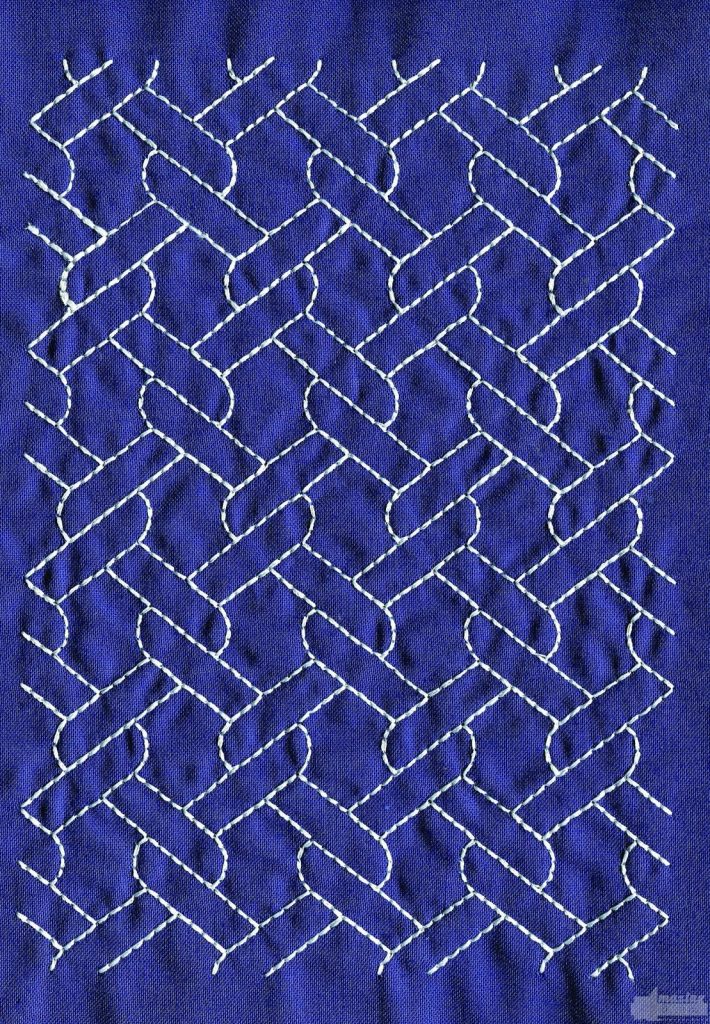
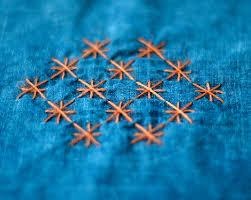

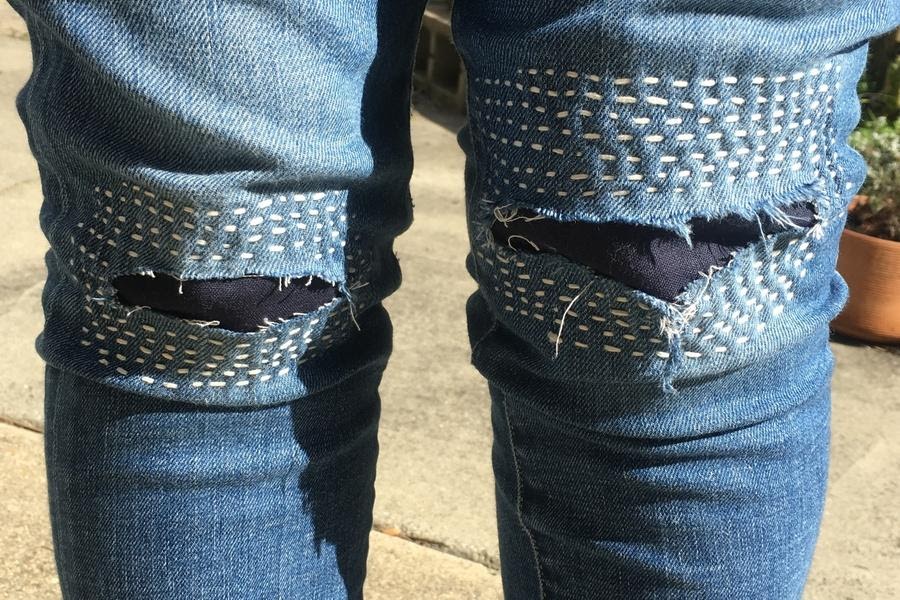
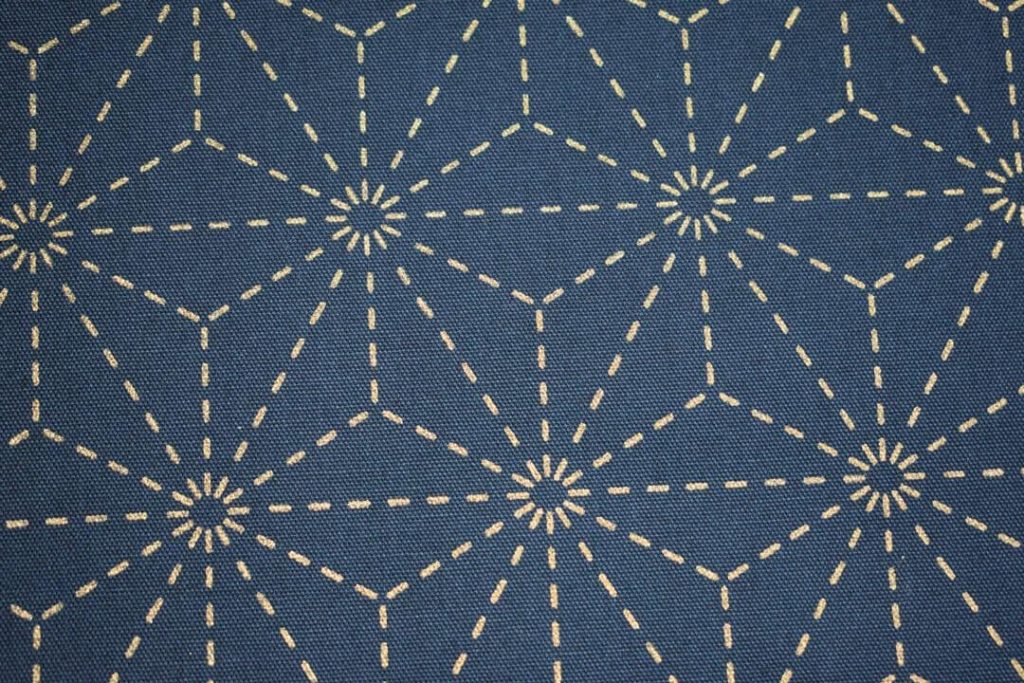
Keep Reading: Levi’s Found a Way to Make Hemp Feel like Cotton
- Cheryl Fall. Sashiko Patterns, Projects, and Resources. The Spruce Crafts. https://www.thesprucecrafts.com/sashiko-patterns-projects-and-information-1177510. Retrieved 25-02-2020
- Meghan Racklin. Instead of hiding rips and tears, the visible mending movement turns them into art. Vox. https://www.vox.com/the-goods/2019/3/25/18274743/visible-mending-sashiko-mending-fast-fashion-movement. Retrieved 25-02-2020
